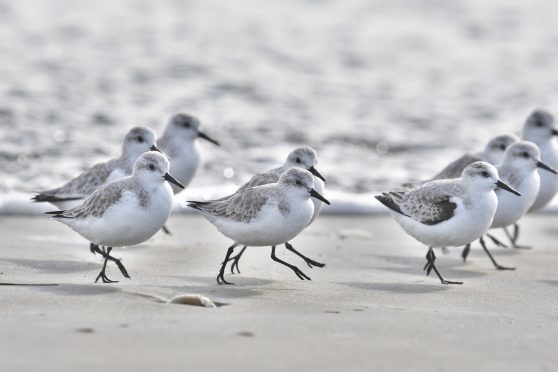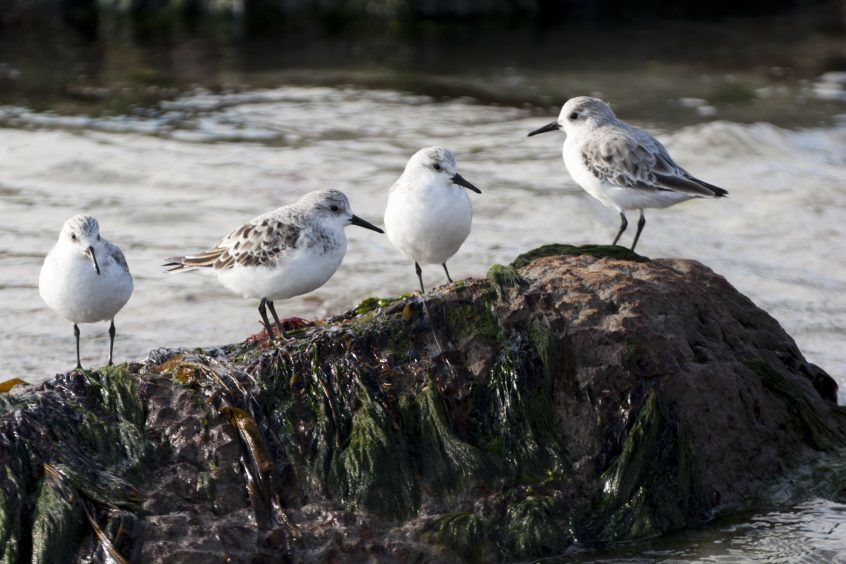By the edge of this sandy bay at Earlsferry, the sanderlings dodged in amongst the surf on pattering feet, following the flow of the sea as it receded and quickly retreating up the beach again as the rolling water surged back.
Up and down this East Neuk shore skipped these little sanderlings, quickly snapping up tiny crustaceans and worms that had been revealed by the waves. They are such attractive waders with their pearly pale plumage and continual frenetic activity.
Unusually for a bird, sanderlings lack a hind toe, which is an adaptation that enables them to quickly run on sand. It also means that when it is windy they are a bit unstable on their feet, suddenly being blown sideways before alighting back onto the beach again.
The tide was out so I moved onto an exposed rocky shelf and started to explore the rock pools, where I soon found a hermit crab.
Hermit crabs lack their own shell, so they protect themselves by using vacant whelk or winkle shells, which they corkscrew their way into – a process aided by their slightly spiral-shaped bodies.
There were hermit crabs in other pools too, one of which was rather bizarrely holding another hermit in its claws. I’m not sure why this was so, but they do often square up to each other, and dominant hermits can force weaker crabs to vacate their shells which they then takeover as their own new home.
At the foot of a barnacle encrusted rock I came upon a yellow spongy-cluster that looked like a congealed clump of rice krispies. These were whelk eggs, which are frequently found on the lower shore in winter. In Scotland, whelks are often known as ‘buckies’ and in the past sailors used these egg clumps as sponges for washing, hence the folk name ‘sea wash-balls’.
On other rocks were the white scribble-like ridges made by keel worms; calcareous protective tube-like casings, which are so familiar to us all. Their casts are so very hard and a bane for mariners as they can foul propellers and hulls.
I headed back up the beach where a rock pipit flickered along the strandline. These robust grey songbirds are specialists of the rocky shore, taking advantage of the abundance of insect life, sand-hoppers and other tiny creatures found in such places. Indeed, these pipits can even behave like sanderlings, feeding close to the sea-edge.
Visiting the coast is so addictive; it is a place where every creature has evolved their own special characteristics to cope with such a unique environment – somewhere that is submerged and then exposed to the elements each passing day. It is a continuum of pounding waves, searing sun in summer and penetrating frosts in winter.
This is nature at its most dynamic and resourceful; a place full of danger yet rich in food – risk and opportunity, the very keystones of our natural world.
Info
Sanderlings breed on the arctic tundra during summer, with many of the birds that winter in Scotland having come from Greenland. They are usually found in small flocks on sandy beaches.











